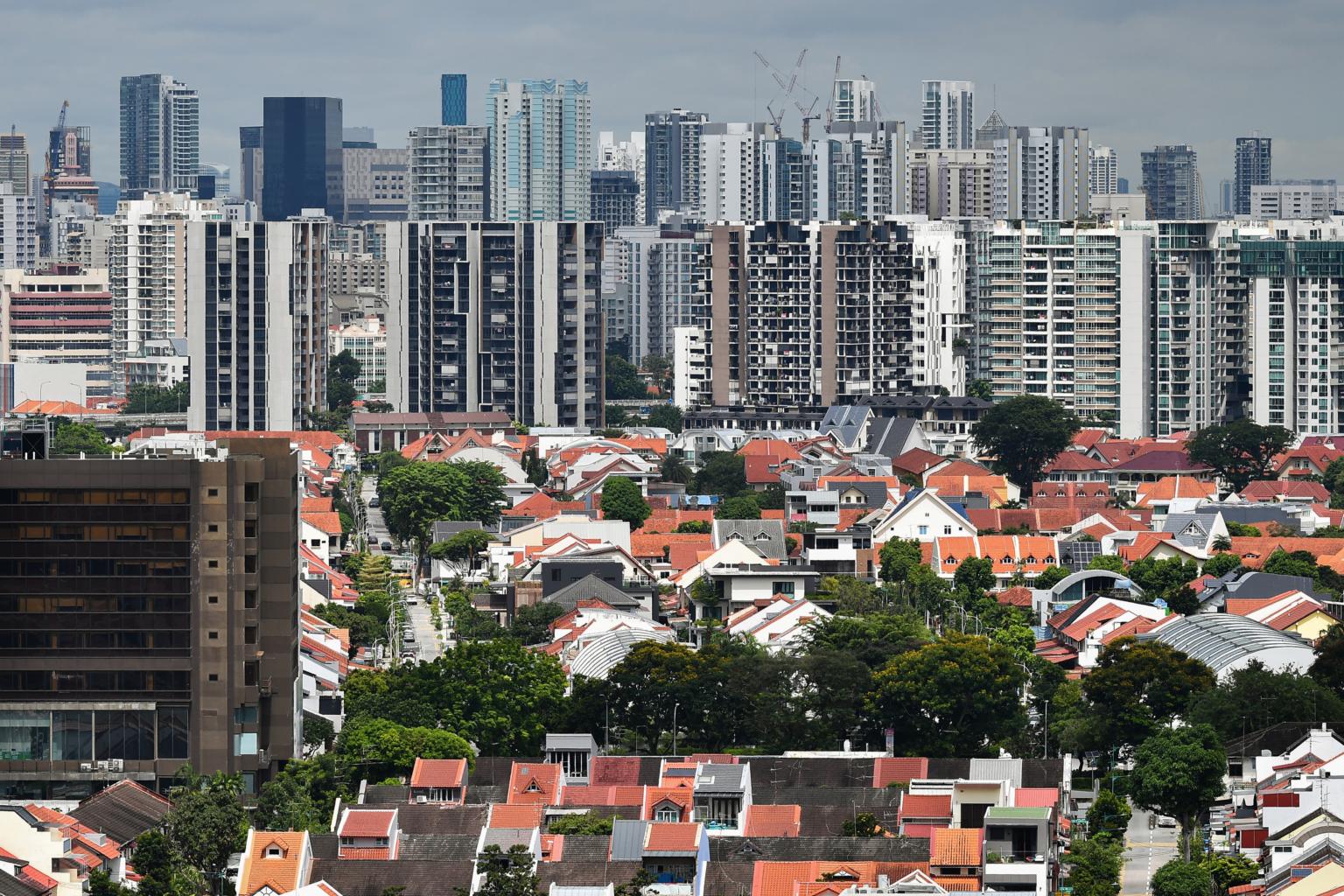Singapore private home prices rise 3.5% in Q2, but rising interest rates could stall momentum
Sign up now: Get ST's newsletters delivered to your inbox

The price rise was higher than the Urban Redevelopment Authority's flash estimate of 3.2 per cent.
PHOTO: ST FILE
Follow topic:
SINGAPORE - Private home prices rose 3.5 per cent in the second quarter, underpinned by a sharp turnaround in city fringe home prices and the continued strength of the landed market.
This is higher than the Urban Redevelopment Authority's (URA) flash estimate of 3.2 per cent and up from a 0.7 per cent gain in the first quarter.
Well-located projects saw strong take-up, with some buyers locking in mortgage rates ahead of further hikes, Ms Tricia Song, CBRE's head of research for South-east Asia, said.
Strong rental growth is also supporting property investment yields, she added.
But the price momentum may not be sustainable as rising interest rates and macroeconomic headwinds could hinder affordability and as more supply will hit the market this year.
New home supply was tight in the second quarter, with 15,805 uncompleted unsold units and 1,701 unsold executive condominium (EC) units. But the situation should ease as around 30,700 units (including ECs) should be completed this year and next year - almost three times the 10,400 units completed in 2020 and last year.
Data released by URA on Friday morning (July 22) showed that the increase in the overall private home price index was led by non-landed properties, whose prices rose 3.6 per cent compared with a 0.3 per cent drop in the prior quarter.
This was due to strong take-up at Piccadilly Grand (Northumberland Road) and Liv@MB (at Mountbatten) in the second quarter, which set new price benchmarks due to higher land prices, analysts said. Piccadilly Grand sold 324 units at a median price of $2,175 psf in the second quarter, while Liv@MB shifted 231 units at a median price of $2,408 psf.
Rising construction costs and land prices, coupled with low unsold inventory levels, have fuelled more optimistic pricing of new launches, they added.
As a result, prices in the city fringe jumped 6.4 per cent in the second quarter, compared with a 2.7 per cent drop in the previous quarter.
Prices in the suburbs grew 2.1 per cent, compared with a 2.2 per cent increase in the first quarter.
Mr Ismail Gafoor, chief executive of PropNex Realty, noted that pent up demand for suburban mass market launches could boost sales for AMO Residence in Ang Mo Kio, which start on Saturday (July 23).
Prices in the prime district rose 1.9 per cent, after a 0.1 per cent drop in the previous quarter, as more foreign buyers returned with the opening of Singapore's borders.
Meanwhile, prices of landed properties grew 2.9 per cent, after chalking up gains of 4.2 per cent in the first quarter.
During the second quarter, developers launched 1,956 uncompleted private homes (excluding ECs) for sale, up from 613 units in the previous quarter.
They moved 2,397 private homes, 31 per cent higher than the 1,825 sold in the first quarter. In the second quarter, 616 EC units were launched and 193 were sold.
Despite the cooling measures, many foreigners are still keen to park their funds in Singapore due to geopolitical uncertainties, OrangeTee & Tie senior vice-president of research and analytics Christine Sun said.
Non-landed home purchases by foreigners surged 102.8 per cent to 292 units in the second quarter from 144 units, she noted.
In the resale market, there were 4,236 resale transactions, up from 3,377 units transacted in the first quarter.
Resales accounted or about 62 per cent of total home sales in the second quarter, due to limited options in the new launch market and some buyers' preference for move in-ready resale units, Mr Gafoor said.
While new private home prices are rising at a faster clip than the resale market, resale stock could tighten as sellers hold off amid a hot leasing market, he added.
The URA data showed that rents of private homes jumped 6.7 per cent in the second quarter, accelerating from the 4.2 per cent rise in the prior quarter.
Rents were higher for both landed and non-landed properties, with those for non-landed surging 7.1 per cent, compared with a 4.1 per cent gain in the previous quarter.
Rents of landed properties grew 3.2 per cent from a 5.3 per cent rise previously.
Mr Leonard Tay, head of research at Knight Frank Singapore, cited growing demand with the opening of borders and also from local buyers who haven't found replacement homes or are affected by construction delays.
CBRE's Ms Song noted that the increase in property taxes for investment properties may have spurred landlords to pass on higher taxes as well as mortgage costs to renters.
The prime district and suburbs saw the biggest increase in rents at 7.7 per cent. This compared with a 3.8 per cent increase for the prime district and a 4 per cent increase for the suburbs in the first quarter.
Rents in the city fringe jumped 5.9 per cent, versus a 4.7 per cent increase previously.
But Ms Catherine He, director and head of research for Singapore at Colliers, said rents may moderate as more homes get completed. "The number of private residential units expected to be completed in 2022-2023 will be significantly higher than the preceding two years," she noted.

